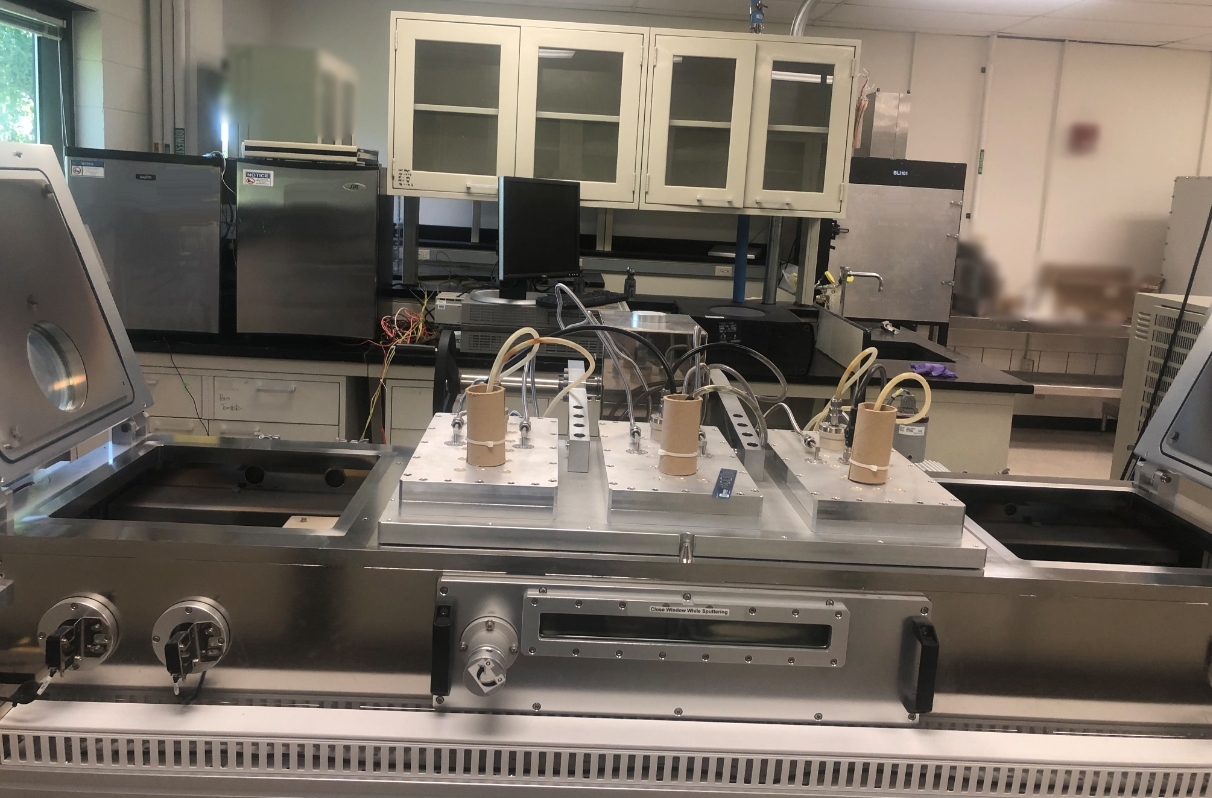Used MAGNETRON Sputtering #194493 for sale
It looks like this item has already been sold. Check similar products below or contact us and our experienced team will find it for you.
Tap to zoom


Sold
ID: 194493
Wafer Size: 4"-6"
Vintage: 2010
Sputtering system, 4"-6"
In‐line 3‐target system
Process variables can be monitored via ZR-RX40
(2) PSICM DC Sputter power supplies
MKS 600 Series pressure controller
NOVA series ST580 Digital temperature
KODIVAC 340 Rotary pump
Main system:
(2) Chambers:
Sample chamber
Main chamber
Chamber size:
Main chamber: 3.5" x ~7"
Sample chamber: 2.5" x 3.5"
Control rack: 2" x 3"
Roughing pump: 2" x 2"
Sputter chamber: ~7" Wide and 1.5" height
Carrier slider: 1" Length Al plate
Gate valve chamber: 1.5" Length
Sputter gun section: (3) Guns
Lamp heater
Sputter target size: 300 mm x 100 mm
Installed target: ZnO, ZnO:Al, Empty
Isolation gate valve: 1 for sample, 1 for vacuum
Transport: Automatic motor driven
Vacuum system:
KODIVAC 1600K Rotary pump
GENESIS ICP 250L Cryo pump
Automatic vacuum / Process control with LED display
Vacuum sensor / Control: ATOVAC GVC22005
Sputter system:
Sputter power supply:
ADVANCED ENERGY RF-10S: 1 KW 13.56 MHz
(4) Gas flow controls:
SEAHWA KRO-4000
KOFLOC 3665
SEC 7440
Substrate motion control:
LED Panel display with speed controller
Manuals included
2010 vintage.
MAGNETRON Sputtering is a physical vapor deposition (PVD) process where a target material is bombarded by ions of a noble gas, which knocks off and vaporizes the target material. This vapor will then condense onto the surface of a receiving substrate, i.e. the workpiece. This process uses a magnetic field to control the ion beam, resulting in compounds and films with a higher quality and uniformity compared to non-Sputtering systems. In MAGNETRON Sputtering, a target (made of the material to be co-sputtered) is placed at the top of the system chamber. The target is mounted to a cathode plate which has a power supply connected to it. The chamber also contains an anode (usually circular, but other shapes are available as well). An permanent magnet mounted inside the chamber surrounds the target and creates a high magnetic field gradient across the radial direction. Ions of a noble gas, such as argon, are produced by an ion source and travel to the target. When a noble gas is used, the energy of the ions will be low enough that they will not cause any damage to the substrate. These ions are then accelerated towards the target by the anode. When the ion beam reaches the target, the ions are being deflected across the radial, due to the strong gradient magnetic field. This causes the ions to spread out and get distributed more homogeneously across it's surface, resulting in a more uniform coating thickness. The target material is then sputtered off of the target by the accelerated ions and is deposited on the substrate, which is typically placed on the bottom of the chamber. By offsetting the substrate and target, an angle of incidence can be achieved, resulting in a more desirable deposition profile. Advantages of Sputtering are: - High deposit rate & increased throughput - High quality products with excellent surface qualities and adhesion - Uniform coating thickness - Availability of a wide range of materials for MAGNETRON Sputtering, ranging from metals, semiconductors, ceramics and even glasses - Flexibility in controlling the reactive components in Sputtering process through the introduction of reactive gases like nitrogen, oxygen and hydrogen Disadvantages of MAGNETRON Sputtering are: - High levels of gas consumption due to continuous purging of the chamber - Low ion utilization efficiency - Potential issues with arcing, as the voltage needs to be high to accelerate the ions - Risk of target erosion, which can result in devitrification of the deposited film - Substrate heating, which ties up additional resources for controlling the process temperature.
There are no reviews yet